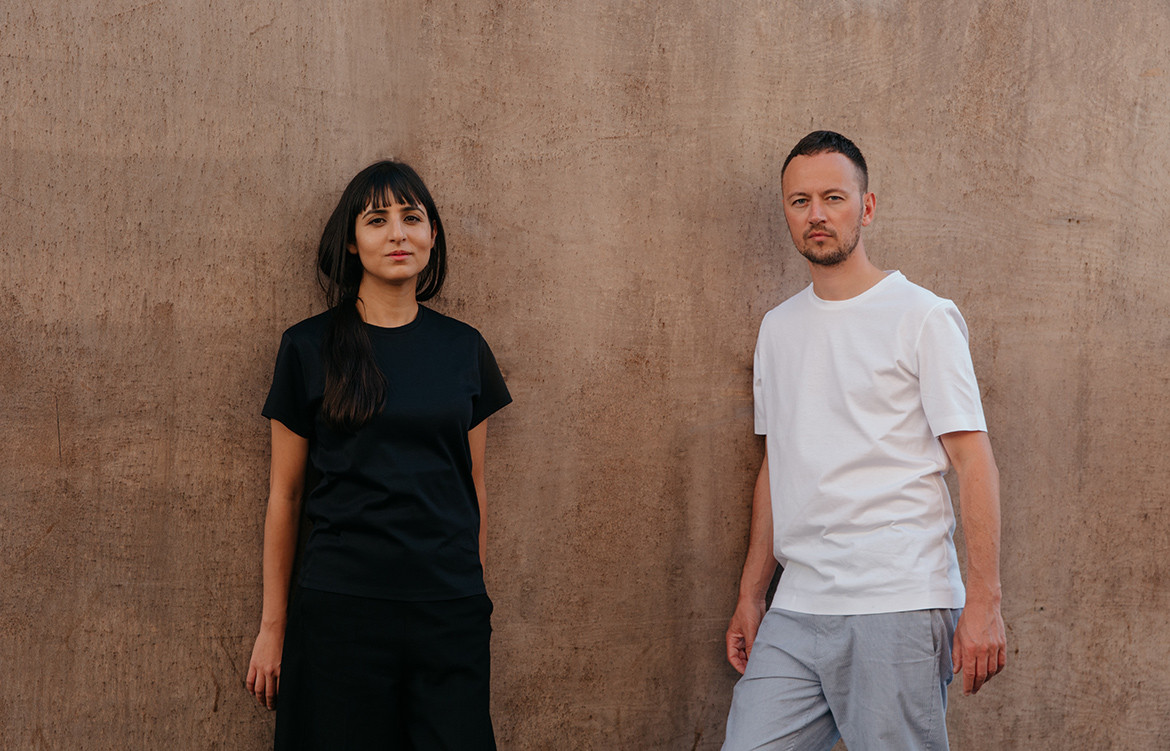The apple didn’t fall too far from the tree for multidisciplinary designers and partners Ruben de la Rive Box and Golnar Roshan, who both grew up with fathers who were designers. Golnar in an Australian-Iranian household and Ruben in the Netherlands. Many years and two university degrees later (Golnar studied Visual Communication and International Studies at UTS and Ruben Interaction Design at the KKU University of the Arts, Utrecht) they met working for Marcel Wanders in Amsterdam.
Here, they set up a graphics department with the intention to bridge the interior and product teams. “That’s where we started to develop our multidisciplinary view of design and started to apply our thinking to objects, spaces and surfaces,” says Ruben. Next came London, where Golnar began working for Tord Boontje on projects for Moroso and Swarovski, among others. Ruben joined Tom Dixon’s studio and worked closely with Tom himself. In addition to working with some of the most globally reputable designers, this period gave them the opportunity to deepen their knowledge and understanding of the entrepreneurial side of running a studio.
“After working for some of the most renowned designers and clients of the industry to bring their visions to life we felt the urge to give presence to our own voices through our work,” says Golnar. Living in London at the time, amidst the cities’ inimitable creative buzz, Rive Roshan launched its first pieces in 2014.
In addition to bouncing between various design disciplines, and using methods of one to inspire the design thinking of another, their work ultimately seeks to experiment in the intersection between art and design.
“A great artwork is something you can experience once and it can stay with you for a lifetime,” says Golnar. “You don’t have to own it to keep it with you forever.” A great piece of design, however, she says can be great because of how easily it is incorporated into daily life and rituals: “You can choose to own it or make use of it in your daily life”. Playfully challenging the opposing notions, Golnar and Ruben create art that is functional, or, design objects that incite an emotional or contemplative response. “Why shouldn’t the objects we use and the spaces we experience make us feel or think as well? This is how we approach our work,” she adds.
The idea that beauty equals vanity is similarly called in to question in the work of Rive Roshan. As Ruben notes, from the beginning a designer is taught that aesthetic is second to functionality – form follows function. “You are traditionally taught to engineer the most optimal answer to a problem,” he says. Like art, much of Rive Roshan’s work offers personal expression (theirs) as function, to be appreciated – or not. “That gradient between expression and function intrigues us,” says Ruben.
Visually, as opposed to conceptually, Rive Roshan’s projects and commissions are recognised for their imaginative and playful use of colour and visual interference through material. The Colour Shift Panels and Trichroic Table are two of their most well-known pieces and have recently been adapted for an installation in the new SKP department store in Beijing for a collaboration with the Korean brand Gentle Monster. Rive Roshan has also have also collaborated on projects for Acne Studios, Rimowa and Jil Sander.
Recently, Golnar and Ruben were asked to collaborate on a series of carpets for Moooi. From a series of options presented the Trichroic design was one of two selected. This came as no surprise to the duo given it is one of their most well-loved designs. But what was surprising, says Ruben, was the green light on the Fluid designs: “they were simply inspired by the water in front of our studio, photographed from the front door.”
In 2019 for Dutch Design Week, Rive Roshan presented an exhibition, Stilled Life, to bring together a selection of their ideas and collaborations into the one space. “We wanted to create an immersive space that would create a stillness in people, through subtly stimulating all senses,” says Ruben.
Looking towards the future, the grand plan for Rive Roshan, for Ruben and Golnar is jarringly modest in contrast to their detailed and complex designs. It is simply to build a body of work that aptly represents their interests. Furthermore to continue to build a healthy practice that provides them with the opportunity, as Golnar says, to develop and experiment, sell and distribute.
Rive Roshan
riveroshan.com
Photography by Dunja Opalko

